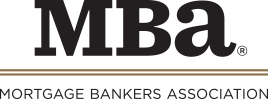
CBRE: High Net Worth Individual CRE Investment Grows
Commercial real estate demand from high net worth individuals–those with more than $1 million in liquid assets–rose to $10.3 billion last year, reported CBRE, Los Angeles.
The figure represented the highest level since 2013, CBRE said.
“While the high net worth individuals’ real estate activity only comprises approximately 2 percent of the total U.S. commercial real estate volume, their overall appetite for real estate product remains strong as they search for overall returns,” said CBRE Americas Head of Investment Research Revathi Greenwood.
High net worth individuals favor multifamily investment, CBRE said. The sector received $3.5 billion in HNWI investment last year. Retail was the most favored sector in 2015. This year, 37 percent of HNWI investors said they prefer multifamily, followed closely by industrial at 33 percent and retail and office at 12 percent each.
CBRE reported that 70 percent of high net worth investors cited overall returns–both capital appreciation and income returns–and yield relative to other asset classes as the main motivators for investing in commercial real estate. Only nine percent of HNWI surveyed reported having a higher risk tolerance than last year; most said they have the same or lower risk tolerance than in 2016.
Gateway markets such as Los Angeles and New York remain attractive metros for investment among HNWI, but Atlanta was the top-ranked market, said CBRE Capital Markets Vice Chairman of Institutional Properties Malcolm McComb. “Investors like Atlanta’s projected population growth of 100,000 people per year and headroom for rental upside,” he said. “Atlanta is also a jobs machine, with 70,000 new positions created last year. Atlanta’s airport, the busiest in the world, is also a huge advantage for attracting employers because of the number of direct domestic and international flights.”
Looking at threats, 30 percent of HNWIs expressed concern that property is overpriced and a bubble is waiting to burst. Nearly 25 percent said they worry about occupier demand being affected by global and local economic shocks, while another 17 percent cited overbuilding leading to excess supply as a threat. Rising interest rates represented a concern for 16 percent.
These themes continue at the asset level. CBRE said 60 percent of HNWI cited asset pricing as one of the biggest investment obstacles. Competition from other investors (18 percent) and availability of assets (17 percent) ranked second and third.
McComb called HNWI investors a good leading indicator for smart investing. “They are nimble and focused on relative value across markets,” he said.
